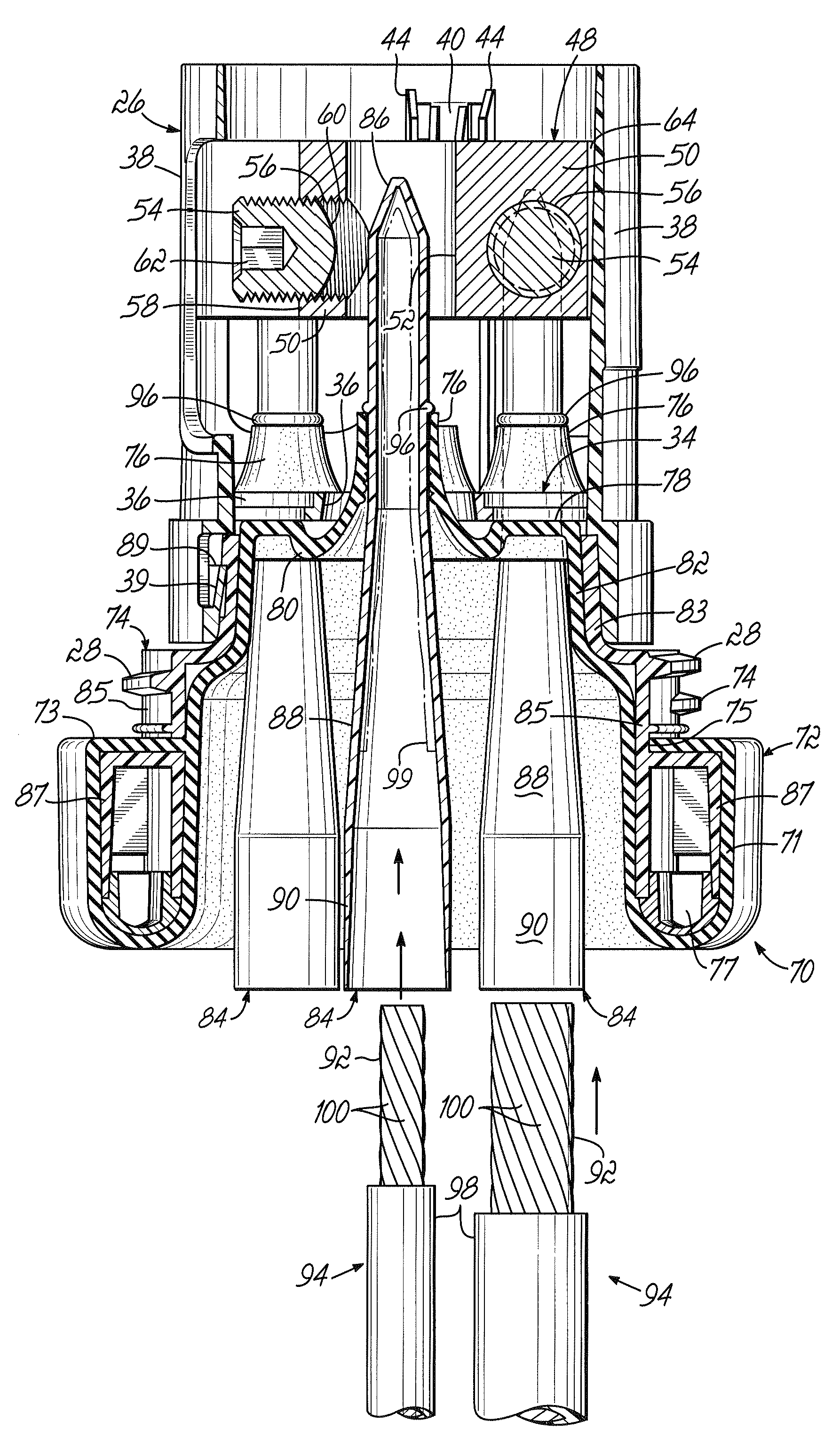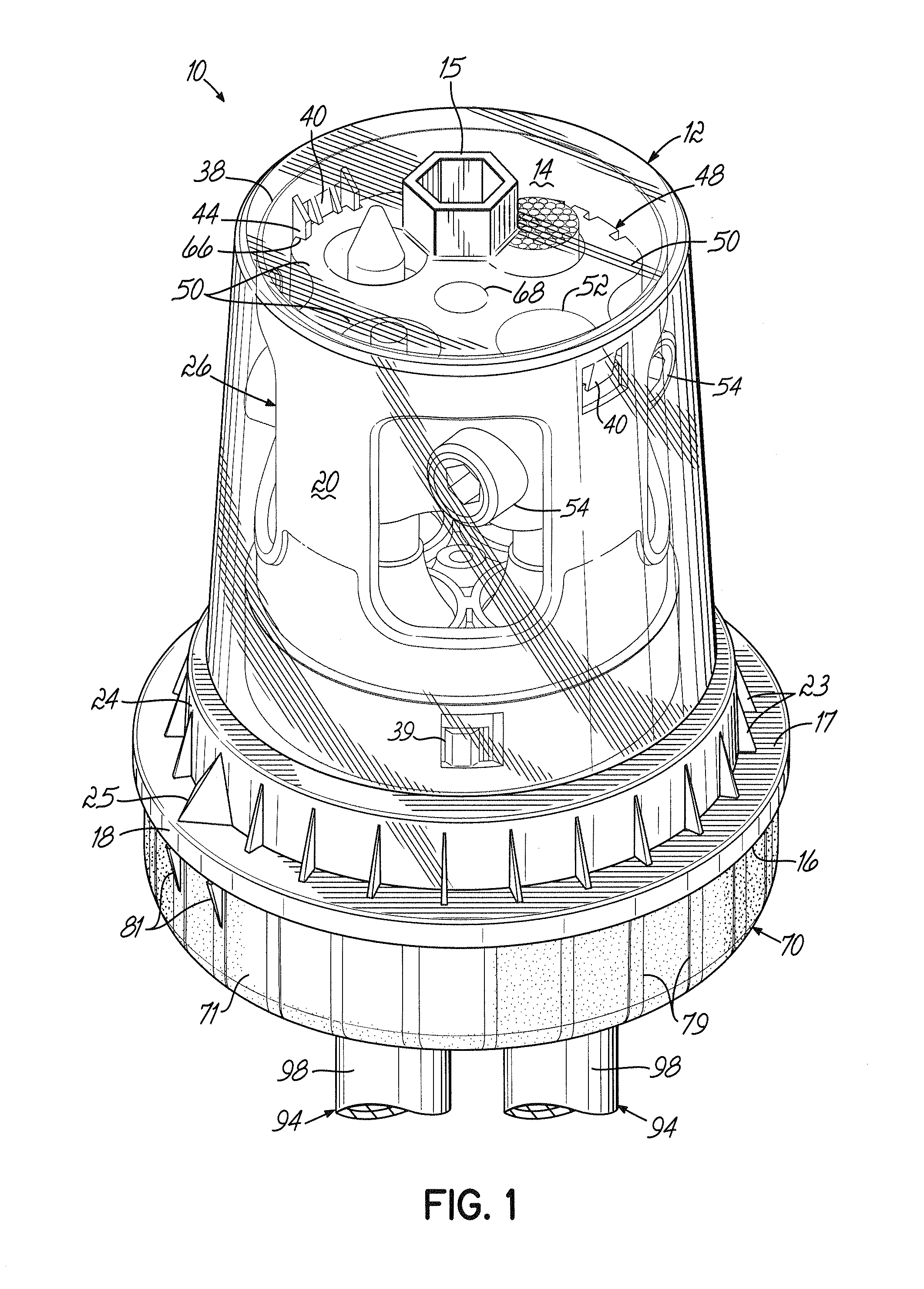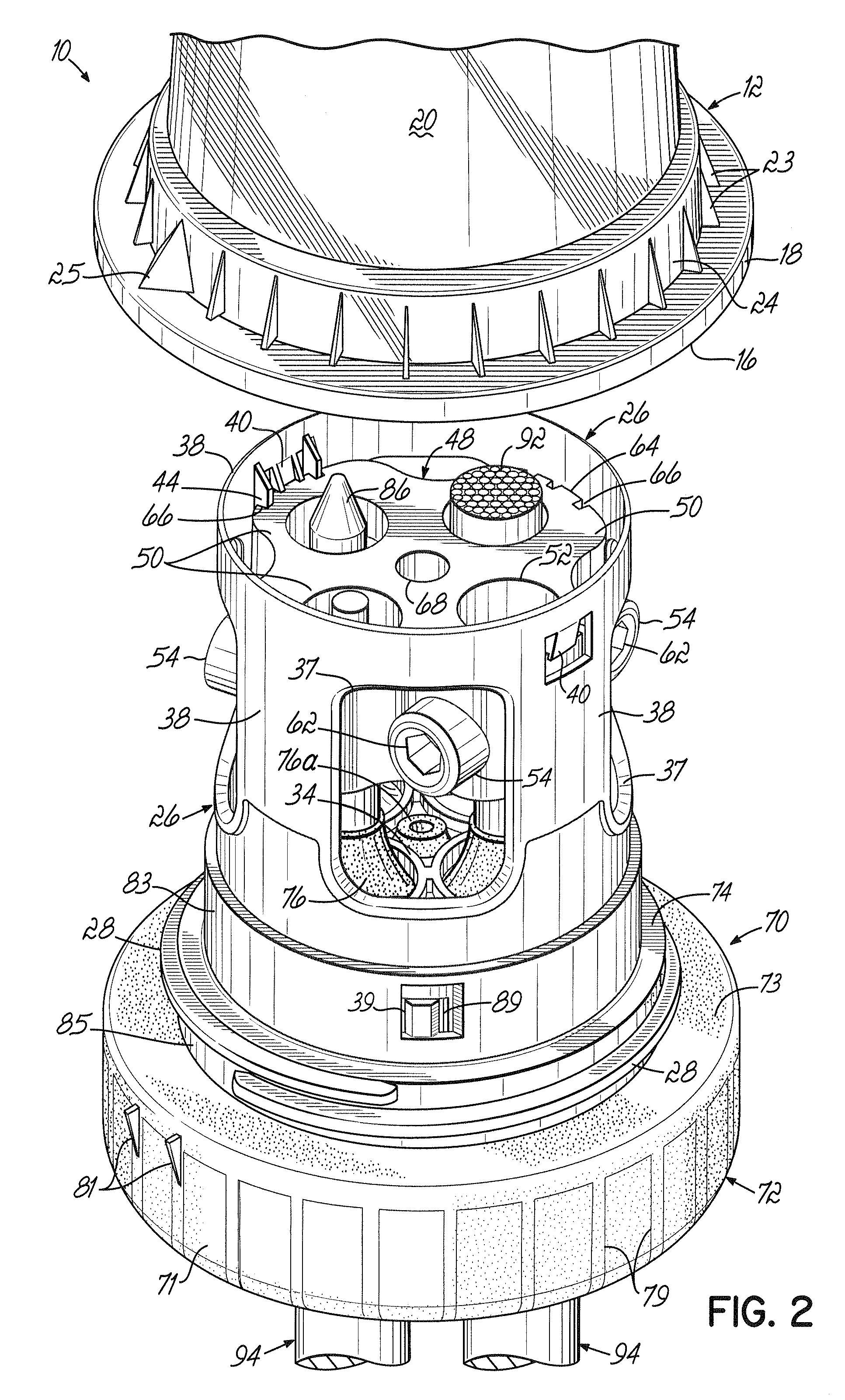Submersible electrical connector
a technology of electrical connectors and submersibles, applied in the direction of electrical connections, coupling device connections, electrical apparatus, etc., can solve the problems of affecting the operation of electrical connectors, so as to avoid the detailed and tedious cutting and sizing, and facilitate the use of a technician. , the effect of avoiding the loss of watertight plugs and plugs
- Summary
- Abstract
- Description
- Claims
- Application Information
AI Technical Summary
Benefits of technology
Problems solved by technology
Method used
Image
Examples
Embodiment Construction
[0032]One exemplary embodiment demonstrating the various features and aspects of an electrical connector assembly 10 according to this invention is shown in FIGS. 1-2A and FIG. 4, and the installation of conductors and assembly of the electrical connector is shown in FIGS. 3A-3C.
[0033]The electrical connector assembly 10 of this invention includes a number of individual component parts and elements which will be described in detail with respect to FIGS. 1-2A. The electrical connector assembly 10 which is adapted to be submersible includes an enclosure 12 with a closed upper end 14 opposite from an open end 16 surrounded by a peripheral skirt 18. A generally cylindrical sidewall 20 of the enclosure 12 extends between the closed upper end 14 and the skirt 18. A tool adaptor 15 which is shown generally hexagonal projects outward from the closed upper end 14. The tool adaptor 15 helps make the installation and removal of the enclosure 12 easy for a technician. The peripheral skirt 18 co...
PUM
 Login to View More
Login to View More Abstract
Description
Claims
Application Information
 Login to View More
Login to View More - R&D
- Intellectual Property
- Life Sciences
- Materials
- Tech Scout
- Unparalleled Data Quality
- Higher Quality Content
- 60% Fewer Hallucinations
Browse by: Latest US Patents, China's latest patents, Technical Efficacy Thesaurus, Application Domain, Technology Topic, Popular Technical Reports.
© 2025 PatSnap. All rights reserved.Legal|Privacy policy|Modern Slavery Act Transparency Statement|Sitemap|About US| Contact US: help@patsnap.com



